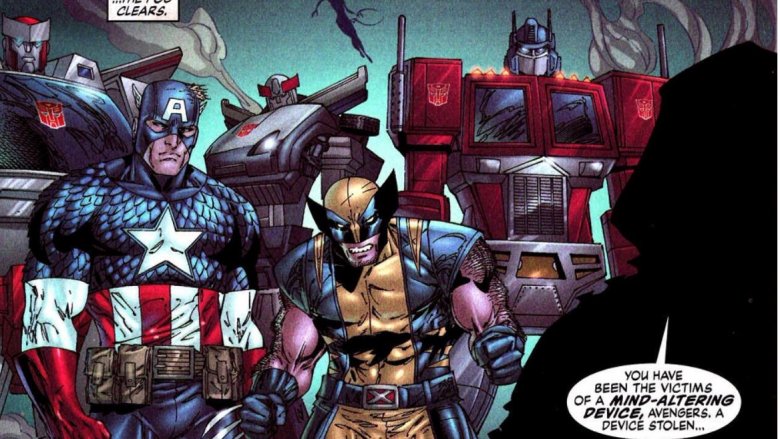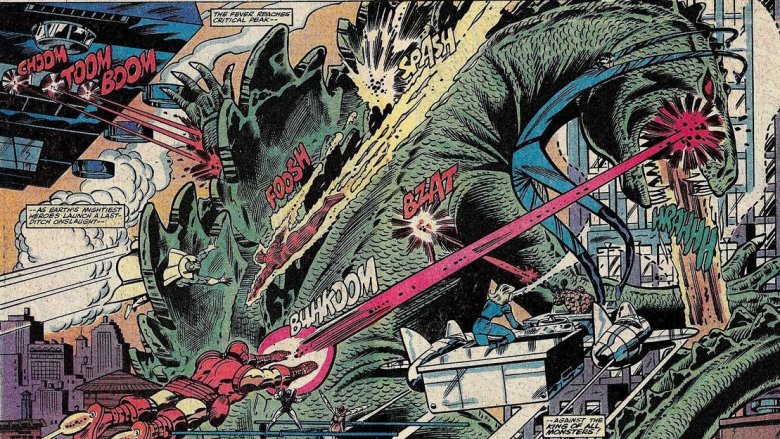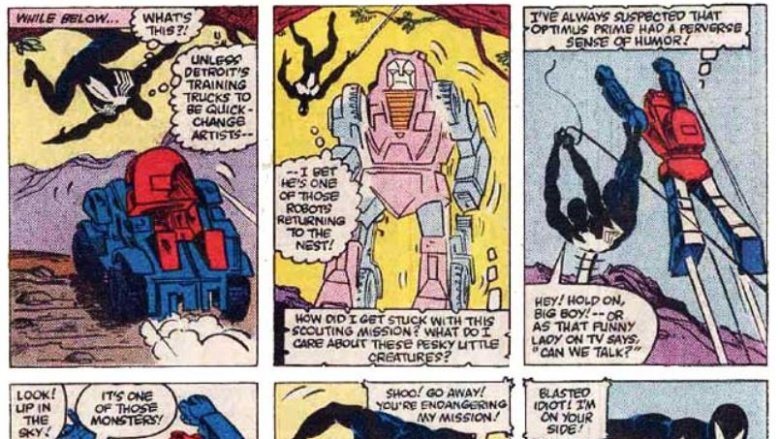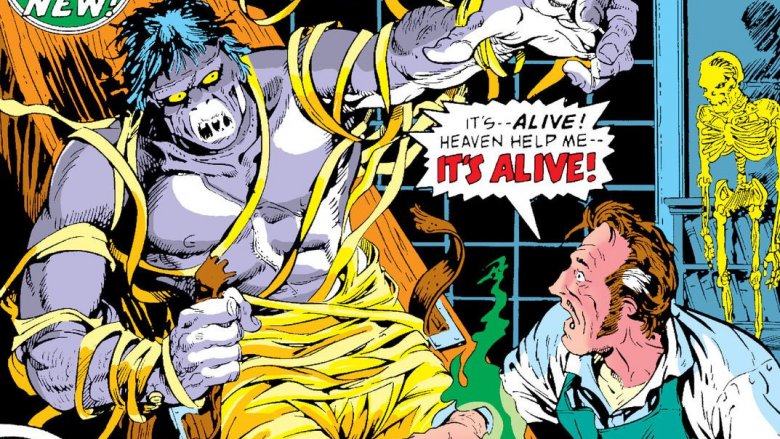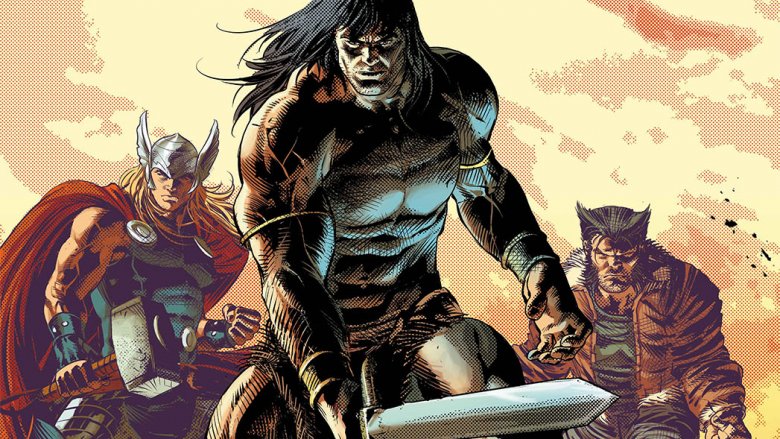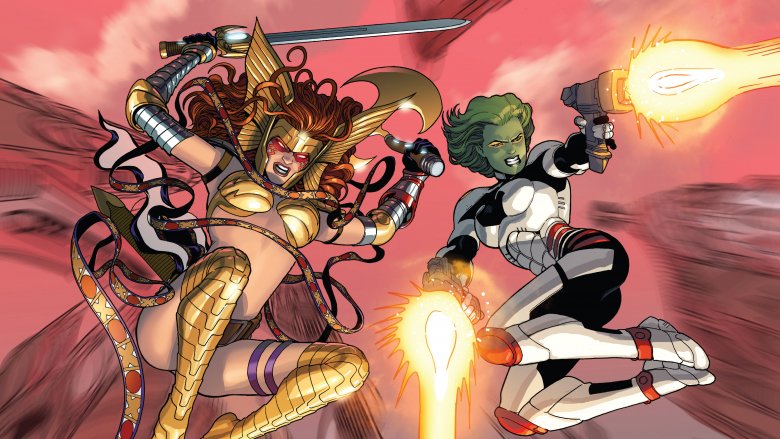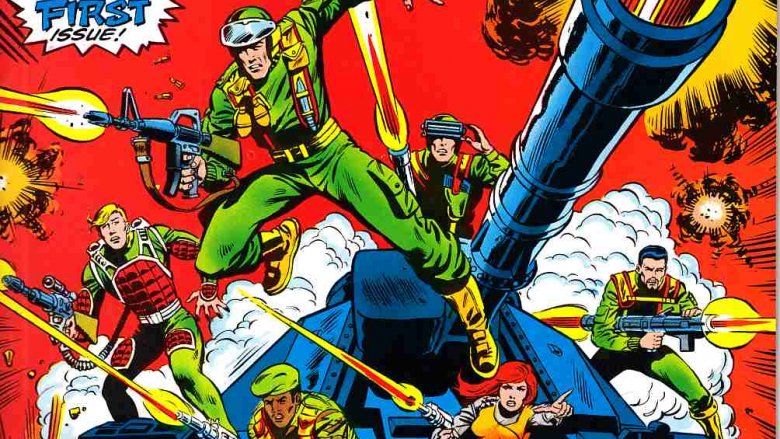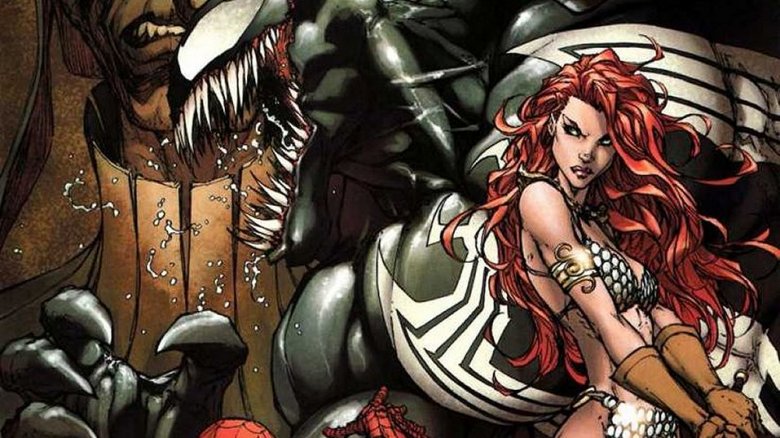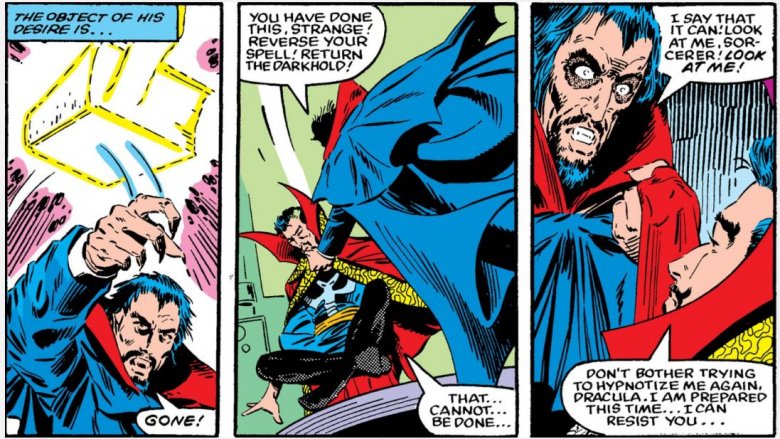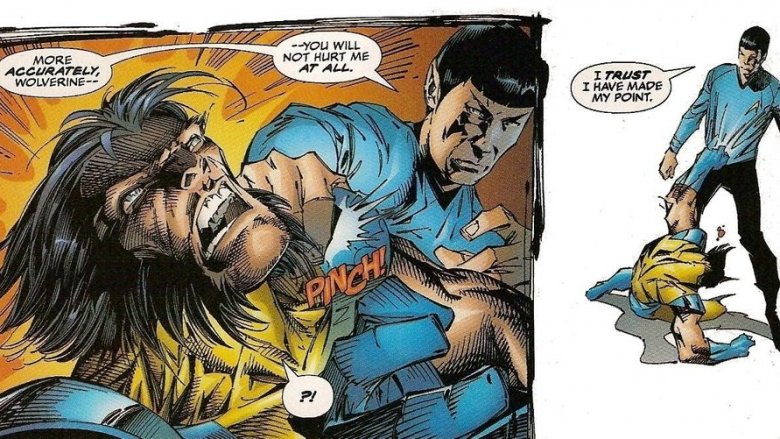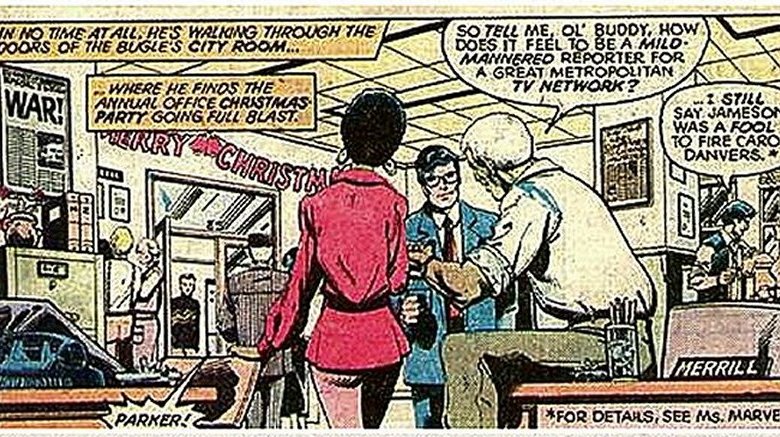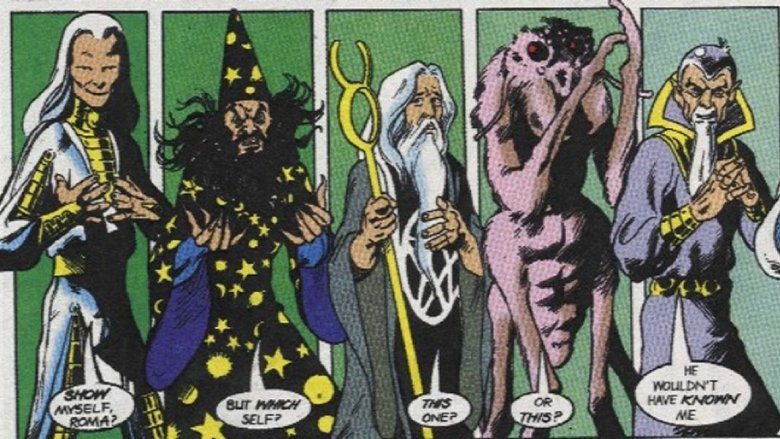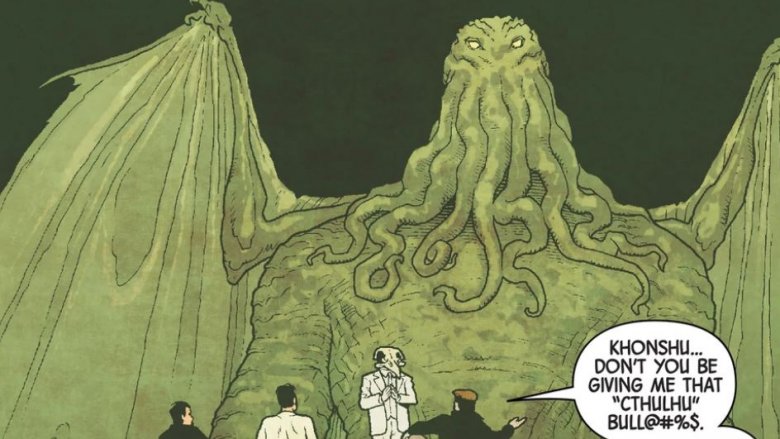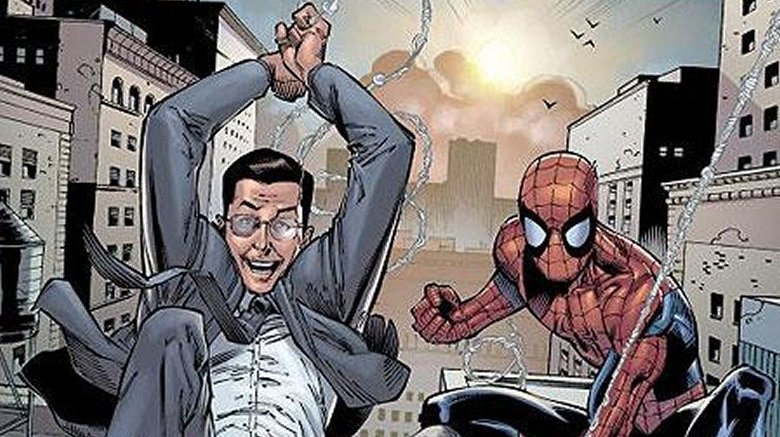Popular Characters You Never Knew Were In The Marvel Universe
If you somehow didn't realize how many Marvel heroes and villains were flying around out there, then hey, take a look at Avengers: Endgame. From blue cyborg aliens to jacked green behemoths to jacked purple behemoths to wisecracking raccoons, the Marvel Universe is packed full of more epic sagas, superhero teams, and genre mashups than you can shake an Infinity Gauntlet at. Hey, don't shake that thing!
While everyone can name their Spider-Mans and their Black Panthers, though, even a big Marvel fan might not be aware that some fan-favorite "non-Marvel" characters from film, TV, literature, and more actually exist in the same universe as Thor, Captain Marvel, and their friends. Sure, it's unlikely that many of these folks are going to join the MCU anytime soon (mostly due to copyright issues, a problem even Thanos can't snap away), but you'd be surprised at some of the major heroes who have Marvel ties.
Godzilla stomped his way through the Marvel landscape
One of the craziest Marvel storylines in the '70s involved a colossal scaly monster, bigger than a skyscraper, busting free from an iceberg and stomping across the United States. On its way, the creature encountered such standard Marvel obstacles as S.H.I.E.L.D., the Avengers, and the Fantastic Four. One thing that wasn't so standard? The monster wasn't some Godzilla ripoff, but insanely enough, the real deal. Yes, Godzilla himself (or herself?) tussled with Marvel's heroes, and the results were just as bonkers as you'd hope.
According to SyFy, Marvel struck a deal with Toho (the film company behind all the classic kaiju flicks) to bring Godzilla to their pages, and since they couldn't afford to license any of Godzilla's usual monster opponents, they instead kept the dinosaur beast preoccupied with superheroes like Iron Man, Black Widow, and the Vision. Writer Doug Moench went pretty much all out in every issue, at one point having Hank Pym shrink Godzilla down to a few inches — leading to a vicious altercation with a rat — and even including a scene where cranky ol' J. Jonah Jameson yells at Godzilla outside his window, according to Den of Geek. Marvel eventually lost the big guy's comic rights, but all of these stories have remained in continuity.
Sadly, throughout the comic's run, Godzilla and the Hulk never crossed paths. Talk about a missed opportunity!
Marvel created the Transformers you know today
Sure, kids love toys, but turning a bunch of goofy robot action figures into an epic storyline? That's no walk in the park.
Back in the '80s, Hasbro really wanted to develop a detailed background story for their 26 mutating robot toys the Transformers, but didn't know where to start. So, they went to Marvel for help. Yes, Marvel — or to be precise, Marvel editor Bob Budiansky — created most of the classic Transformers names, characters, and story elements that you know today, according to Adventures in Poor Taste, and Budiansky even fought for the name Megatron when Hasbro thought it was too scary. Thanks, Bob!
Once Budiansky's Transformers mythology was developed, Marvel then premiered all these robotic heroes and villains in their own Transformers comic series, according to Comic Book Resources, where the Autobots were portrayed as heroes in the same universe as the Avengers. As early as the third issue, Optimus Prime, Gears, and company teamed up with Spider-Man. Cool as it might be to imagine the Autobots rolling out to battle Thanos, though, it was never meant to last. Hasbro still held the rights, Marvel eventually stopped putting out comics, and the two continuities have mostly been separate ever since, outside of occasional team-ups like the 2007 comic New Avengers/Transformers. Too bad. A groovy MCU-style Transformers with more developed robot personalities would've steamrolled over those Michael Bay flicks.
It's alive!
If you go poking through those old Marvel handbooks, you'll find Frankenstein-inspired characters all over the place. The Hulk is the obvious one, but there's also the Thing and Ultron, and even the Punisher got Frankensteined at one point. However, the actual creature created by Mary Shelley in 1818 was also incorporated into the Marvel Universe.
Marvel's take on Frankenstein's monster is actually far more faithful to the source material than the old Universal Studios flicks ever were. Marvel's creature is the same clever, tragic figure that Shelley first wrote about, unlike the Boris Karloff version, and this monster experiences all the same events depicted in the novel ... until the end, of course, where instead of killing himself, he ends up running into a bunch of surviving Neanderthals in the Arctic circle ('70s Marvel was nuts), getting stuck in an earthquake, and then being frozen in ice a la Captain America, thereby making it easier for him to link up to the contemporary Marvel world. These days, the creature usually calls himself Frank, and he has become a proper superhero, known for teaming up with fellow quirky outsiders like Howard the Duck and She-Hulk.
Conan the (Marvelous) Barbarian
When you hear the name Conan the Barbarian, you probably picture a shirtless Arnold Schwarzenegger in his prime, chopping off heads. It was the Game of Thrones of its day. You might also remember the 2011 reboot starring future Game of Thrones antihero Jason Momoa, a few years before he became America's newest heartthrob.
However, this ancient Cimmerian warrior didn't originate on film, but rather, in a series of pulp stories by Robert E. Howard in the 1930s. Howard died in 1936, and Conan died with him — until the 1970s, when Marvel Comics scooped up the old character's rights, transferred Howard's stories into comic book form, and made Conan the pop culture icon he is today. In fact, Marvel's influence on the 1982 Schwarzenegger film was so prevalent that the comic's writer, Roy Thomas, at one point even worked on the movie's screenplay, according to SyFy. Lest you believe that Marvel merely published Conan comics separately from their main line, though, fear not: Conan's Hyborian Age is a part of Marvel Universe history. Thanks to some time-travel shenanigans, Conan has met heroes like Ant-Man and Thor, according to Comic Book Resources, and though the comics publisher lost the Conan rights for a few decades, they recently got them back. Today, the Hollywood Reporter writes that the barbarian warrior can now be found teaming up with antiheroes like Wolverine, Venom, and Elektra.
Angela from Spawn switched universes
Copyright disputes can cause wacky things. Just ask Shazam ... or don't, actually, because that's a long story.
Instead, take a look at Angela, the divine Image Comics antihero who first appeared in Spawn #9, in 1993. Created by Neil Gaiman and Todd McFarlane, Angela was originally portrayed as an angel sent to kill Spawn who later discovered that her existence had been woven from the souls of sacrificed women. Angela proved to be a popular character, but she eventually got terminated by Malebolgia (you know, the vicious demon dude), at which point she was resurrected in ... uh ... the Marvel Universe?
Yep, Angela is a Marvel character now. Newsarama reports that this was the result of a decade-long legal dispute between McFarlane and Gaiman, which saw Gaiman taking the character's rights to Marvel. Given that Marvel has its own cosmic mythology, it's only natural that Angela's origins had to be a tad reworked, so she's now portrayed as the long-lost sister of Thor and Loki, with the real name Aldrif Odinsdottir. In recent years, she has spent her time as a member of the Guardians of the Galaxy. One imagines that Groot makes a more fun drinking buddy than Spawn, eh?
G.I. Joe, meet Marvel
Another Hasbro toyline, another Marvel comic. According to Geek, much of the classic G.I. Joe lore that fans know today — Duke, Snake Eyes, all that stuff — came courtesy of Marvel writer Larry Hama. While the G.I. Joe crew didn't usually get all that mixed up with the traditional Marvel heroes, like the Transformers did, Joe A Day points out that Duke once popped up in an issue of The Amazing Spider-Man. More notably, Marvel claims credit on the first-ever crossover between G.I. Joe and the Transformers, a feat that IDW (which now owns the rights) has since replicated. IDW's 2010 comic G.I. Joe: A Real American Hero does pick up the Larry Hama continuity, but presumably eschews any Marvel connections.
One rather amusing anecdote about G.I. Joe is that many of Hama's story concepts were originally created for a different, unpublished comic. Titled Fury Force, according to Comic Book Resources, the comic would have depicted Nick Fury's son leading an elite strike squad. Though Fury Force never saw the light of day, Hama repurposed these ideas to fit the G.I. Joe team. Considering that he went on to write the book for 12 years and over 150 issues, it seems like things worked out for the best.
Marvel created Red Sonja
Whenever Conan the Barbarian comes up in conversation, his ally Red Sonja usually isn't far behind. Arnold Schwarzenegger even costarred in the 1985 Red Sonja spinoff, starring Brigitte Nielsen, and in recent years, big names ranging from Robert Rodriguez to Amber Tamblyn have struggled to get a reboot off the ground, according to Comic Book Resources. At one point, Rose McGowan was even set to play the role.
Funny thing, though: Red Sonja wasn't part of Robert E. Howard's pulp stories. She's a Marvel Comics creation.
Red Sonja first appeared in the 1973 comic Conan the Barbarian #23, by Roy Thomas and Barry Windsor-Smith, and she was created mainly because Howard's original tales didn't have anything in the way of strong and/or developed female characters. According to CBR, Red Sonja proved to be almost as popular as Conan, earning her own solo comic and the aforementioned feature film. Bizarrely enough, Sonja's unexpected popularity led to her rights being spun off to a separate company, which is why even though Marvel recently got Conan back, they're now barred from using Red Sonja.
Dracula, lord of the undead
Forget about that "Drake" crap in Blade: Trinity. In the comics, Marvel's Dracula is the real Dracula, and he's the cloak-wearing, powerful, nightmarish supervillain you'd expect, with a healthy blend of Bram Stoker's original concepts and Bela Lugosi's theatrics. Rather than guest-starring in somebody else's book, the world's most infamous fanged supervillain hit the four-colored pages in the 1972 comic Tomb of Dracula, by Gerry Conway and Gene Colan. In the years that the great vampire actively menaced the Marvel world, he crossed paths with such notable heroes as Spider-Man, Doctor Strange, the X-Men, and Howard the Duck. The heroes who really stuck in Dracula's craw were people like Blade and Hannibal King, who both premiered within Tomb of Dracula's pages.
Considering that Dracula is actually a classic Marvel villain, Blade: Trinity had no excuse to portray him so poorly. Maybe the MCU will give him another chance someday? If nothing else, it's a good excuse to see more Howard the Duck.
Spock vs. Wolverine, coming up
Yep, the X-Men and the Enterprise crew have encountered each other. A few times, actually! To be fair, though, these crossovers require an asterisk: The stories themselves acknowledge that both camps come from separate realities, which is kind of obvious, considering that there aren't any mutants enlisted in the United Federation of Planets. That said, this far-flung, interdimensional fangasm is (fingers crossed) still a part of both Marvel continuity and Star Trek continuity.
Besides, it led to some iconic moments. The first time that Marvel's mutants appeared on the bridge of the Enterprise, for example, MTV says Spock took down Wolverine with a good ol' Vulcan nerve pinch. Ouch! Luckily for Logan, he fared better when they journeyed to the era of Star Trek: The Next Generation, where he was able to bond with the equally cranky Worf. The X-Men and Next Generation crew met a second time in an authorized '90s novel by Michael Jan Friedman, according to Gizmodo, in which Data and Banshee sing duets, Geordi chills with Nightcrawler, and Captain Picard and Professor Xavier amuse themselves by remarking on their uncanny resemblance. Keep in mind, this book was published years before Patrick Stewart nabbed the latter role. Maybe somebody in Hollywood was taking notes?
Mild-mannered reporter Clark Kent, reporting for duty
There's a Superman in the Marvel Universe. No, really. The same guy over at DC Comics has a Marvel counterpart, but he's keeping a low profile.
Confused? Okay, here's the deal. Back in the '70s, Huffington Post reports that Marvel quietly teased cameos by a "great metropolitan newspaper" reporter named Clark Kent. This soft-spoken guy has the same dark hair and glasses you'd expect, as well as a partner named Lois ... though he was once caught cuddling up with She-Hulk, according to Gizmodo, so maybe he and Lois aren't dating yet. Anyway, Clark first appeared in X-Men #98, but he's been all over the place, sometimes appearing on TV, hanging out with the Daily Bugle's Robbie Robertson, or investigating an Oklahoma crash site as recently as 2006.
This Clark has never displayed any heat vision or flying abilities, but come on, he must have powers, right? Maybe he just keeps his heroic antics a secret, instead of prancing around in a blue suit like his DC counterpart. Smart man.
The classical wizard
Doctor Strange might be the most notable Sorcerer Supreme out there, but he ain't the only wizard in town. Merlyn, the Arthurian legend, has also held that title, according to Marvel, and he's hung out with some of the biggest, weirdest entities in the Marvel Universe. The Marvel version of Merlyn is generally portrayed as resembling the quirky old guy you'd recognize from The Sword in the Stone, and though his background is still tied to King Arthur, the rest of his life is as muddled, bizarre, and confusing as you'd expect. According to Uatu the Watcher, Merlyn moves through time in a "backwards" and "sideways" manner, and he is linked every other version of himself in the multiverse, as seen above.
When you combine these timeline shenanigans with Merlyn's magical powers, it renders him almost impossible to figure out. Which, honestly, is exactly his intention. Basically, he's like that guy in the bar who seems friendly, but always gives you roundabout stories instead of clear answers.
Uh-oh, here comes Cthulhu
You really can't understate the influence that H.P. Lovecraft's cosmic horror stories have had on popular fiction, and the Marvel Universe is chock-full of Lovecraftian terrors that would send shivers down your spine. Cthulhu himself is part of Marvel's dark, multi-dimensional pantheon, and while little is known about this particular incarnation of the great tentacled elder god, he has occasionally appeared in darker titles like Moon Knight and Doctor Strange. He has never played a central role, though his children have: One X-Men story involving the Phoenix Force featured a ghastly monster called the Dweller in Darkness, portrayed as a spawn of Cthulhu who wanted to demolish reality. Do it for the old man, son.
Other characters from Lovecraft's Cthulhu mythos — or references to them — have popped up in Marvel stories for decades. For example, Yog-Sothoth appeared in a number of Conan the Barbarian comics, as did the nightmarish deity Shub-Niggurath. Doctor Strange once had a copy of the Necronomicon. Marvel's characters might be likable folks with relatable stories, but their universe certainly has some creepy corners.
Stephen Colbert to the rescue
What, Captain America's shield in the background of every episode wasn't a big enough clue? Sure, Stephen Colbert (kohl-burt) is a real person. But the pompous, egomaniacal guy who hosted The Colbert Report was a fictional character, not at all like the real dude, and this Colbert (kohl-bare) is actually a relatively major figure in the Marvel Universe.
The fictional Colbert ran as a third-party candidate for U.S. president in Marvel's version of the 2008 election, according to Wired, and he was immensely popular with the Marvel populace. Truthiness for the win. Colbert mostly appeared in various Spider-Man comics, at one point even getting tangled up in a fight with the Grizzly — a B-grade bad guy who wears a dumb teddy bear costume — which resulted in the web slinger having to rescue him. Filled with the same self-importance as his TV character, Marvel's Colbert presumed that Grizzly must have been sent by the Red Skull or the Kingpin as an assassination attempt.
If TV Colbert and comics Colbert are the same, is every episode of The Colbert Report is set in the Marvel Universe, too? Timelines sure get confusing.
